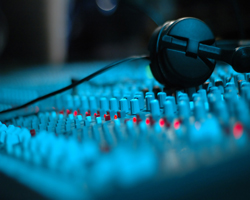Becoming a producer is a very daunting task. A big part of the job is directing musicians and artists, steering them towards a desired sound and performance. You may even be directing yourself.
The more you know about the instruments in your chosen style, the more you gain better control of where to steer the project.
Carriage For Two
Let’s talk for a second about some of the differences between engineering and producing. They not only get mistaken for one another, but sometimes are considered the same thing.
The engineer is the person setting up mics, making sure all signals are clean and running the tape deck. They’re making sure the phase is correct on the drums and the session is backed up properly.
The producer is imagining the sounds that the engineer should be setting up for. They’re listening to the performance of the song and thinking about how the arrangement will work in mixing. Although producers often know a lot about engineering, their focus is on the actual song and sound. This is one of the reasons it’s a joy to have an engineer. It allows you to focus on the music.
I Can Only Imagine
When imagining the blend of sounds that make up recording, it’s helpful to have a good understanding of the elements you’re recording. That means not only having an idea of how a ribbon mic sounds different from a condenser mic, but also how different guitar amps and drum heads affect vibe.
The greatest producers I’ve worked with in my career have great general knowledge of every element involved in recording. And how those elements will all fit together in the end.
Lesson Learned
A good way to advance your understanding of different instruments is to take lessons. The goal here is not to be become a master virtuoso, but simply gain knowledge of the inner workings of each instrument.
Learn a little bit of the language and explore the vast variations of sound capable from the instrument relevant to the style you are working with. This will allow you to make better decisions while recording which, ultimately, makes mixing so much easier.
This doesn’t mean you have to spend years playing an instrument. A handful of lessons can help you to gain a wealth of information.
Knowledge Room
It’s good to know how guitar picks affect the tonality of a guitar as opposed to finger-style or thumb-picking. Ask your teacher to demonstrate different guitars and amp combinations and to explain signal flow from pedals to an amp.
If you’ve spent time on your own with the guitar and you are not getting the performance you want out of the musician or artist, you can sift through your memories of lessons and see if you can isolate the problem or search for a solution with ideas.
For Example
Occasionally, guitarists come into the studio with giant pedal boards. When they plug into the amp, everything sounds lifeless. Because of my knowledge and experience, I knew that they were plugged into too many pedals. I suggested they disconnect all the pedals they weren’t using.





















